- Country of Origin: United States of America
Sentinel Duet: Check out Stephanie Rahi Bassil’s story here for a complementary perspective and a different experience from another corner of our world!
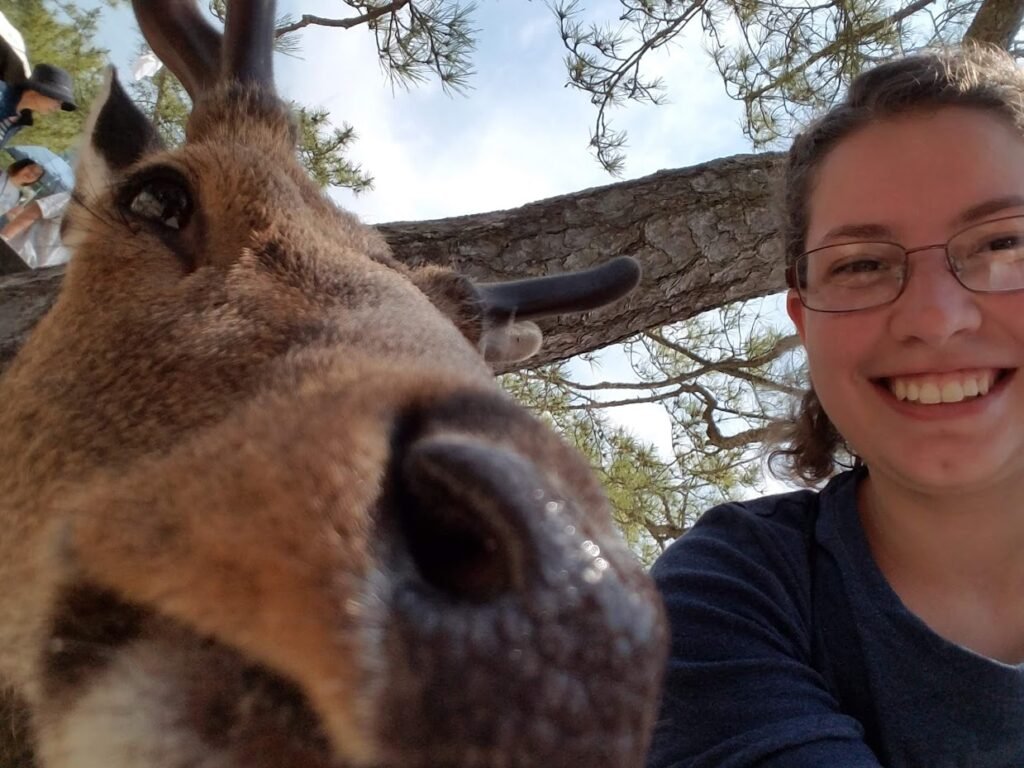
From the rolling hills and countryside of North Carolina to city skyscrapers illuminated with neon signs and the ever-crowded streets of Tokyo, Japan, my first step out of the airplane felt like the entrance to another world. With the convenience of airplanes, traveling around the world is just a matter of money and dedication to adventure.
All it takes is one flight to experience the world and its diverse cultures and places.
Japan was my choice of destination: the place I had wanted to visit since I was just a kid. I was first introduced to its culture through media like anime like the ever-popular “One Piece” and the old classics like “Yu Yu Hakusho.” I finally got the chance to visit in the summer of 2019.
Along with a group of eleven other university students, we had our Japanese teacher, Motohashi-sensei, for the trip to act as our guide and translator. The trip counted as a class so it required us to write journal entries for each city we went to, but the students were either there for the credits towards our college degree and/or the experience itself. We had a busy schedule to tour across Japan taking in Tokyo, Nagoya and Kyoto.
I met and spent most of my time with three other girls: Maddie, Madeline and Kaitlin. When our “sensei” wasn’t nearby, I acted as their translator because I could manage communicating Japanese better than that of most of the group. So I took the lead in ordering food at restaurants or translating when our teacher wasn’t nearby. Kaitlin was my roommate for the trip and she went for the experience and photographic scenery. Since she didn’t know any Japanese, I tagged along with her and got plenty of practice. My listening comprehension was always my strong point, so understanding it was easier for me. Our student team leader, Jonathan, was better at reading and writing this unique language.
Local Stories
In the streets, through the streets, or even in a cab, sometimes the locals wanted to engage with us to hear about America or to share their own stories. For example, we were occasionally split into groups for taxi rides where I once ended up with Jonathan, two other girls and the taxi driver.
The driver enthusiastically shared his own journey across Japan via a leather-bound stamp book with hundreds of stamps from different shrines and temples. While I couldn’t understand all of what he said (as some names for shrines can be rather long and tricky to translate directly), I managed to have a conversation with him. Jonathan, on the other hand, looked just as lost as the two girls unless I translated for him. However, Jonathan did help a lot with directions as he knew how to write out the hotel address for the driver when we got separated from the other taxis.
“Which shrines would you suggest we visit?” I asked the driver in Japanese while I flipped through the pages carefully. The stamps were all distinctly unique depending on the shrine’s history or local mythology, so it was fun to guess the images within them.
“Are you guys planning to visit Nikko?” he asked. When I said no, he continued. “My favorite is Toshogu shrine. It’s the memorial shrine to Tokugawa Ieyasu, so it looks like it was made for a king! It’s a gorgeous shrine with many paintings and sculptures.” He went on to explain a lot more about it, though some of what he said got lost in translation. Still, the memory remains with me years later and Nikko has since become one place I hope to visit in the future.
Tokyo was, by far, the city with the most English used in its signs. It was obviously the most crowded; it was like a sea of people crossing chaotically across the four-way crossroads and illuminated by numerous bright neon signs or the giant TV screens on its skyscrapers.
It was a bit overwhelming at first, but there was a chaotic order to the madness that made it easy to just go with the flow of the crowd.
It was pretty standard that the people parted nearly perfectly. People went forward on one side and those on the opposite side went the other way without inconveniencing others.
Our teacher helped everyone get their train passes, which actually offered a super convenient way to travel around the city. The train station system was laid out on maps in both English and Japanese thankfully, but nonetheless, still overwhelming. I can hardly drive without directions in America, much less understand the train system here in Japan, but the trains were certainly the best option for travel throughout Japan. I recommend that tourists get a Japan Rail Pass, which is a multi-use ticket that lasts seven to twenty one days depending on which version you buy. This was what let my group easily go between stations on the JR national train line.
Koto String Instrument
Motohashi-sensei brought us to his friend’s house. She lived in a very traditional-style house complete with “tatami” and sliding doors adorned with famous people’s artwork and numerous Japanese decor touches. She taught a “Koto” string instrument workshop to the community and invited us to come and learn from her. We had never played or been around one before, so it was entirely new for all of us students. Essentially, it was similar to a harp with a wooden body and thirteen strings running down the body of it.
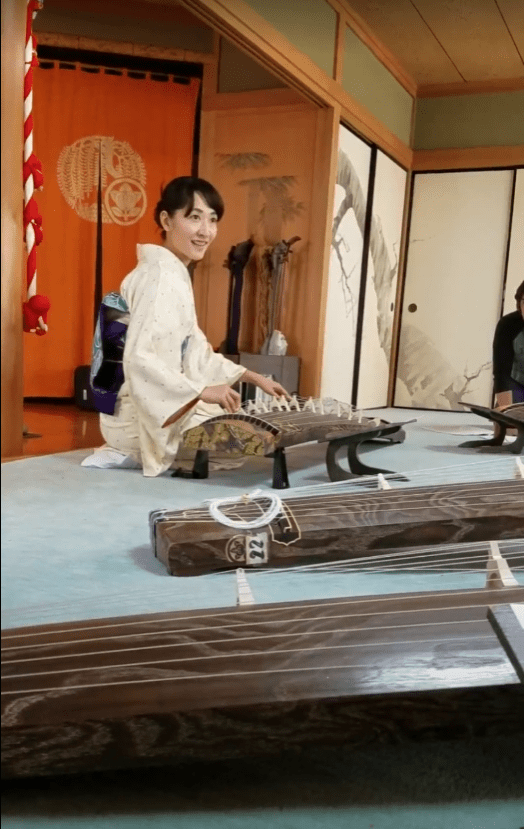
The instructor showed us how each string was supported by a movable bridge that would change the pitch and note. She then gave us three small picks that would go on the fingers of our right hand to strum while we used the left hand to press down on strings. The graceful instructor in the photo taught us about the Koto instrument, the different kinds of Kotos and how they colored the sound played, and how to play “Sakura” and “Twinkle Twinkle Little Star,” both beginners’ songs she teaches at a university with Japanese students.
(The picture above is a still from a video Julianna took. Here is the video if you would like to check it out.)
Tea Ceremony
We also got to sit in on an authentic tea ceremony where an official translator came to interpret for us. Although there was no music, nothing more than the calm wind outside the open sliding door into the garden and the tinkling of windchimes, the silence in which she gracefully prepared tea for us was soothing and enrapturing.
Not only did she make us green tea from plants in her own garden, but she also brought a traditional red bean paste snack for each of us. It was sweet, but not quite as sweet as Americans are used to. The green tea had a light earthy bittersweetness with a nice grassy flavor balance that made it taste refreshing and healthy. This was unlike most regular green tea in America served in restaurants or in tea packs, which just tastes watery accompanied with a stronger bitter tang.
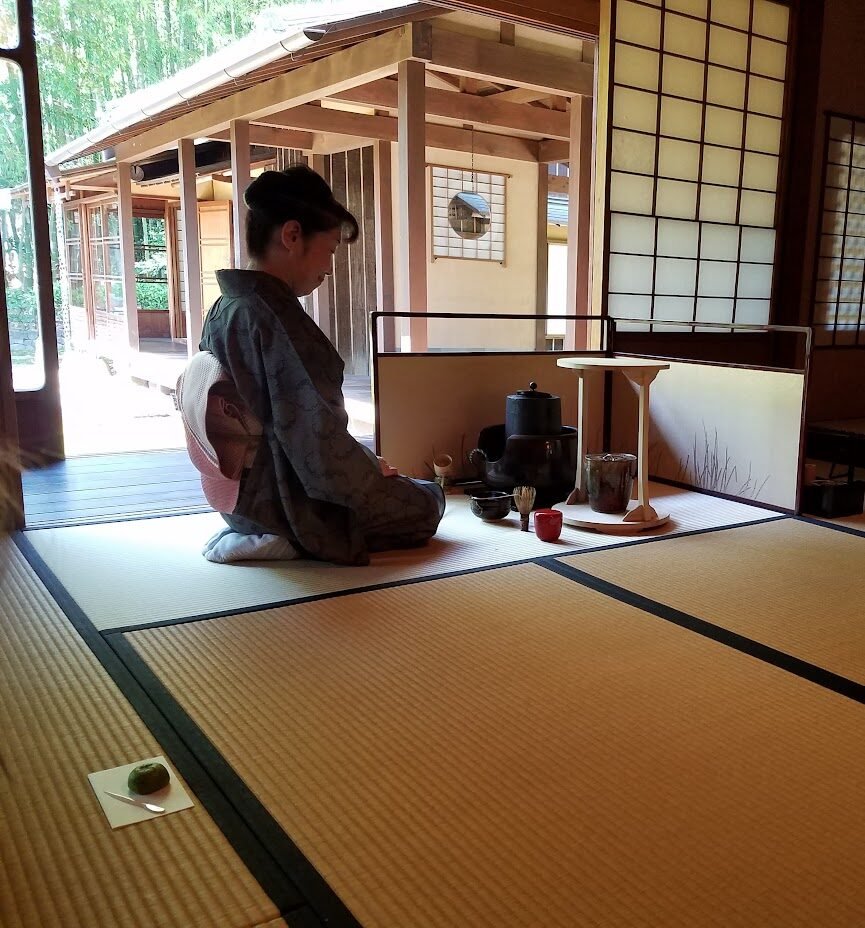
Some of the group, Kaitlin and Madeline included, didn’t like it, so they sneakily offered it to me because I enjoyed the new treat and wanted to be respectful of our host’s offering.
An Encounter at the Asakusa Shrine Festival
We couldn’t have timed our visit to Tokyo better because we came perfectly in time to witness our first Japanese festival at the Asakusa Shrine. The area was jam-packed with people, everyone pressed together like sardines, while the excitement and anticipation were tangible. There was a whole parade of men dressed in traditional “Yukata” (a light cotton kimono), who carried several heavy golden altars to commemorate the shrine. It was so crowded that it was hard to take pictures, but I will always remember the loud whooping cheers of the men singing drunkenly, a traditional part of the festival, through the cheering crowd.
When we separated to do some shopping after the parade passed, I was approached by an older Japanese man when I was out looking for some souvenirs for my sister and mom. He was thin and short, but he spotted me through the crowd and shuffled over to me gently. He asked, in Japanese, “Excuse me, miss. Is that a college bag?”
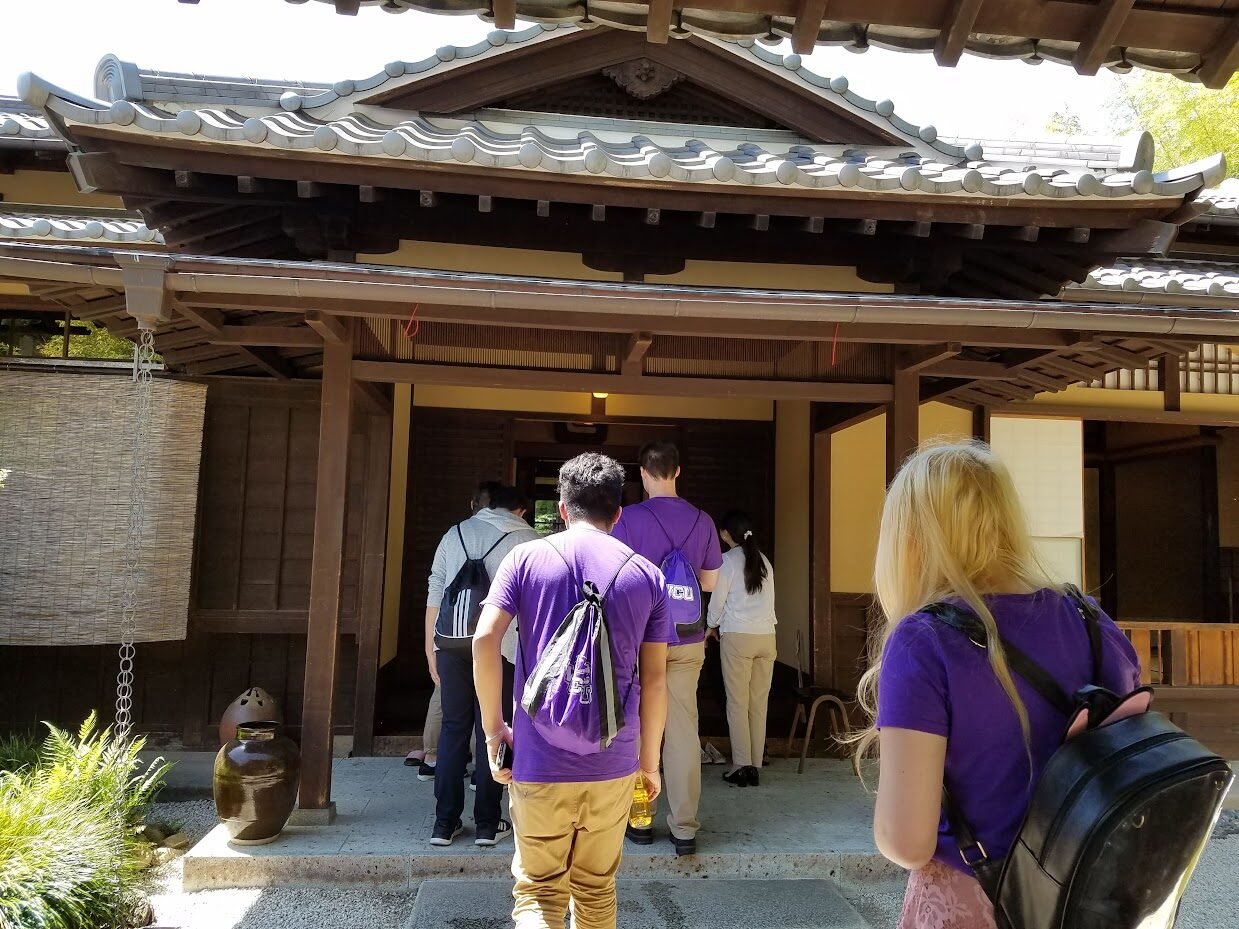
I had forgotten about the bold WCU white letters and university logo on my bag, and I was a bit nervous that my answer in Japanese wouldn’t be good enough, but I replied, “Yes, I came to Japan with students from my university in America.” (For reference, look at the picture! We all had matching shirts and some of us brought the school drawstring backpack.)
“Ah, I see,” he nodded to himself and pointed through the crowd to where a few students from my group were shopping. “Is that your group? You all have matching purple shirts.”
“Yeah, these are our school colors.”
“So why did your group come to Japan? Is it for a class or just for fun?”
“Uh,” I paused and had to mentally arrange my words. “It’s for a class, but we get to visit a lot of places in Japan and talk to Japanese students to learn.”
Despite my imperfect Japanese, he understood what I meant and seemed very giddy that I could comprehend and talk to him. “Good! I hope you learn a lot. Your Japanese is already pretty good, so maybe you can come back later and teach English. Welcome to Japan!”
I find that many people I approached and talked to in Japan were both very appreciative and relieved that I could speak Japanese since there are few English speakers in Japan who know more than just the basic curriculum taught in Japan’s schools. I also think this was one of the few times that someone approached me specifically. While I was initially nervous, the encounters always showed me how invested and curious people were in learning more about each other. Both sides know the courage it takes to approach a stranger, likely with a language gap, to explore the differences and share our own lives. That meeting could change a life, a perspective, an idea, so take a chance and reach out to the locals wherever you travel because everyone has their own story to tell.
Meeting Japanese Students
Our time in Nagoya introduced us to some of the Japanese students at Chukyo University. It was very different culturally, seeing as rules in America are much less constraining and enforced, but Americans do tend to get in a lot more trouble because of that. Our visit to Chukyo University was our most interactive moment among students the same age as us who had taken the time to create a few mini games to practice their English with us and get to know us.
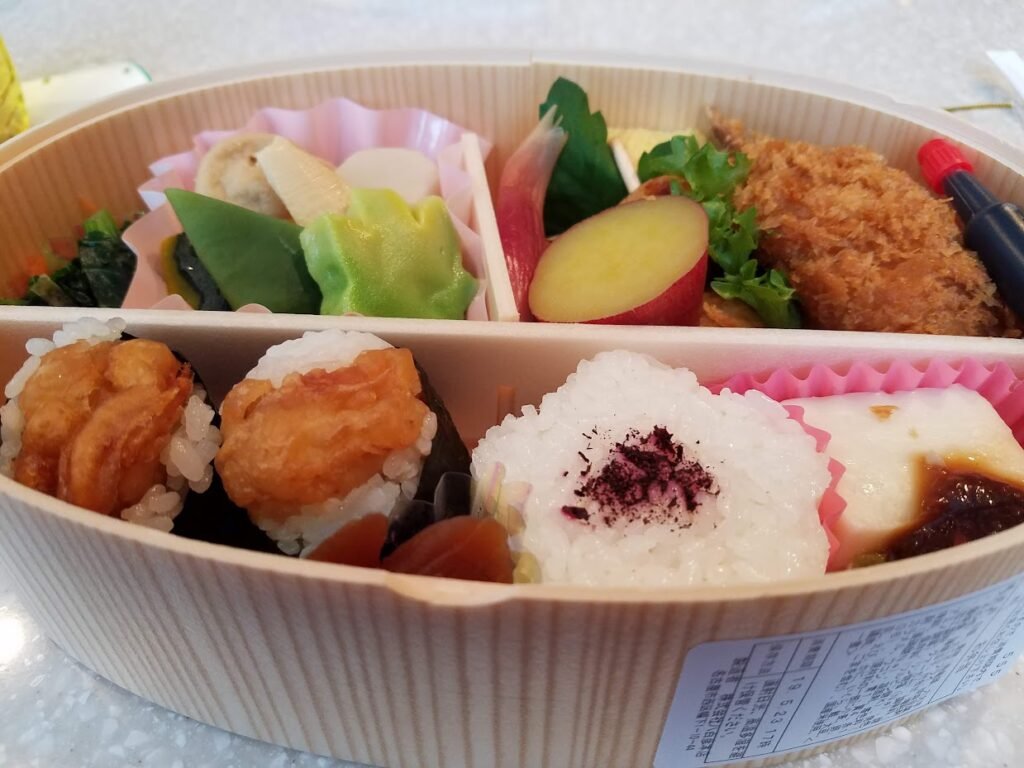
We took turns at each game and I went to a table of girls who had little fishing poles made of sticks and string with a magnet at the bottom to catch the fish on the desk. Each fish featured its name in Japanese and the girls would say the name of the fish that we had to catch. Luckily for me, I knew a few already and I could understand their descriptions for the ones I didn’t. They were very sweet and shy, but they opened up more when I managed to ask them a bit about their lives and dreams. The university also provided small bento box lunches for us to eat together with the students. It certainly let me develop my communication skills on the fly since I had to immediately translate what I wanted to say in my head to Japanese and speak it competently.
Kyoto Adventures
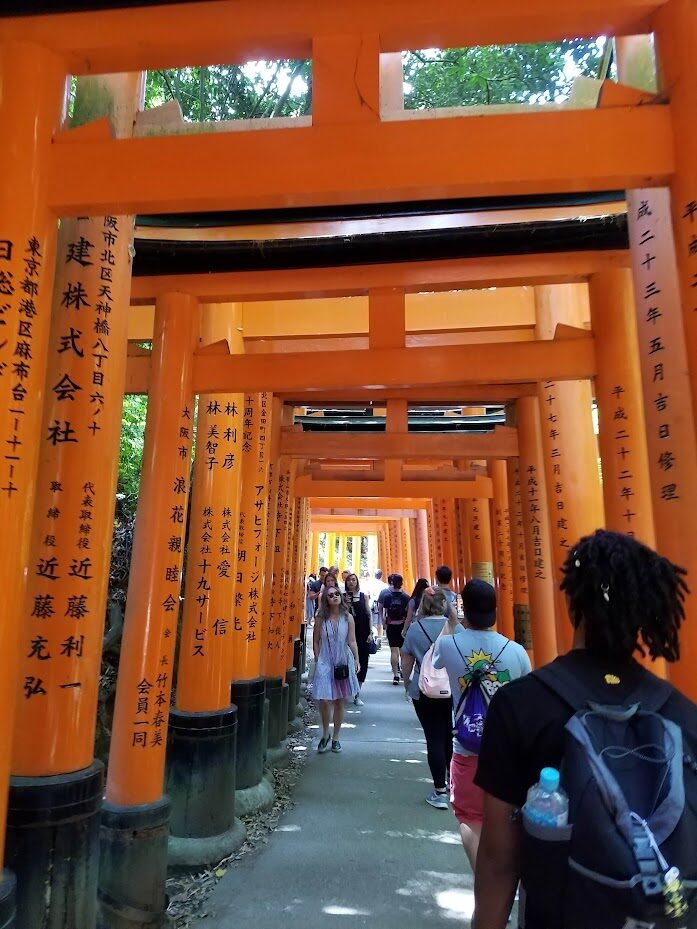
Before our return to Tokyo at the end of our three week tour, our last few days spent in Kyoto brought us to several of Japan’s castles, shrines, and temples. Kyoto is an amazing city and well known for how its over 1,600 Buddhist temples and more than 400 Shinto Shrines have been carefully preserved. Japanese architecture never ceases to amaze me.
The Todaiji temple had the giant Buddah statue and the Fushimi Inari Shrine with the never-ending “torii” (convex) gates, for example. I got some souvenirs from both and enjoyed hiking up through the “torii” gates. Japan really keeps its shrines, temples, and castles in tip-top shape and I honestly looked forward to going to each one.
We also traveled to Himeji Castle, which is an elegant white castle that towered high in the sky, stunning in its traditional historical architecture. Our teacher got us tickets to go inside, which enabled us to enter and climb up some very steep steps to reach the top with its breathtaking view. I spent some time just savoring it and the refreshing strong wind after the climb.
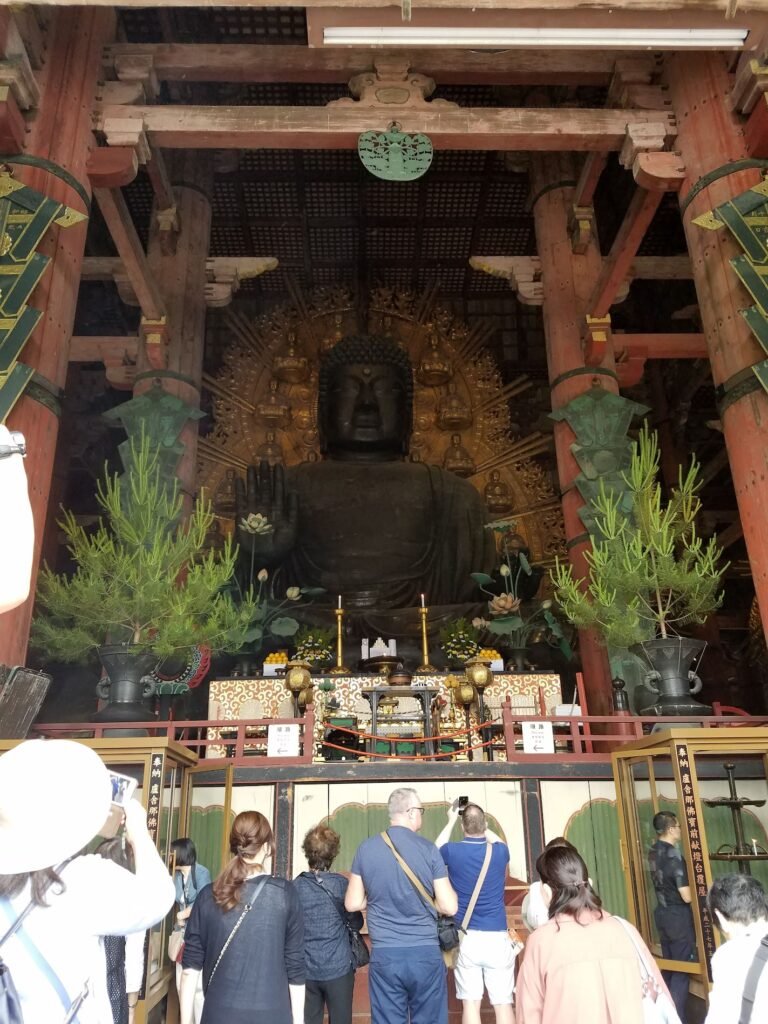
On our last day in Kyoto we also managed to go visit the “Kinkaku-ji” or the “Golden Temple.” It is one of Japan’s Zen Buddhist temples and is one of the most popular places in Kyoto because it’s a castle made out of real gold.
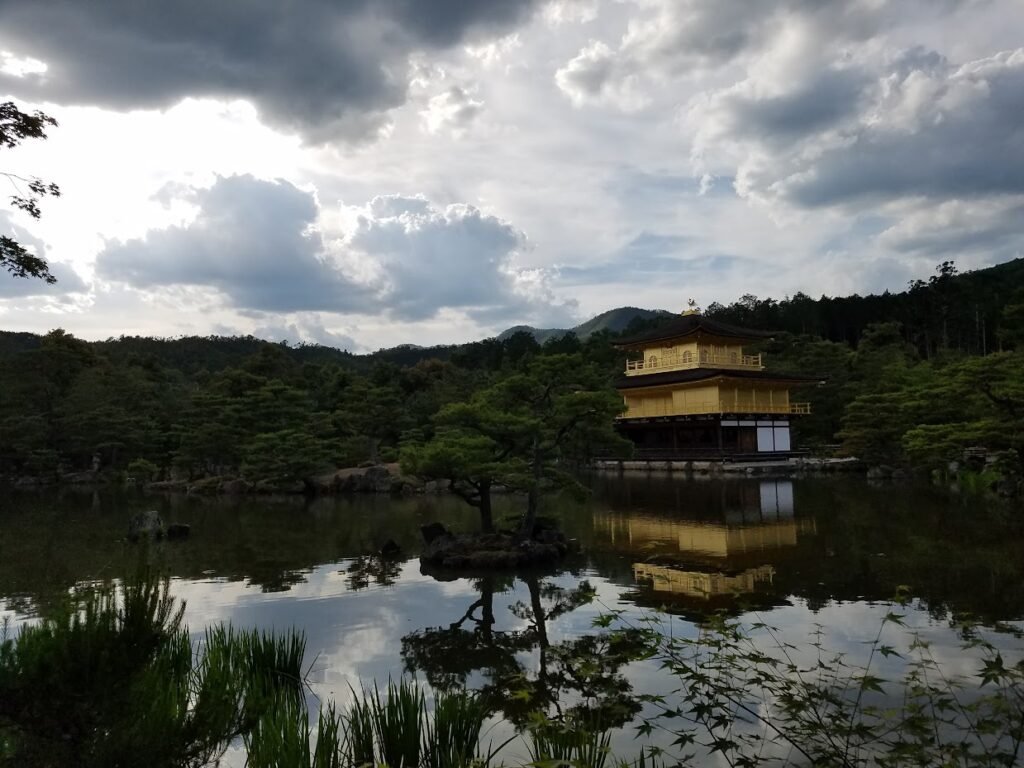
Not only does Kyoto offer amazing remnants of history at every turn, but Kaitlin and I discovered a small local “Izakaya” (Japanese bar) called “Kinnotori” that served a specialty mildly spicy ramen and fried chicken “Karaage” that we revisited for dinner every night we were in Kyoto! As foreigners are pretty rare in that area of Kyoto, the cooks there recognized us each time we returned, and even noticed how I had taken out a bit of the extra spicy chili oil during my first visit. They considerately brought it out on the side the next time just for me so I could moderate the spiciness.
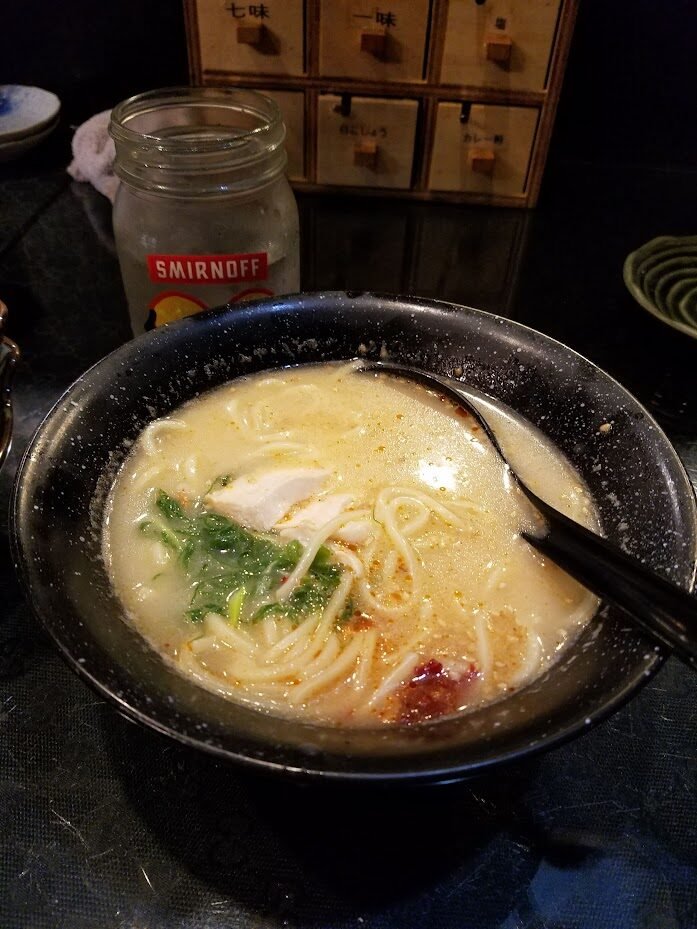
Overall Impressions
All in all, Japan is an amazing place to visit. Whether it’s with tours, a group, or alone, it’s worth the experience. Whispers of “Gaijin” and “Gaikokujin”, the words for “foreigner” in Japanese, followed my class as we stuck out among the homogenous-seeming local crowds. It felt more curious than anything, and we passed numerous kids staring at us with wide eyes and students wanting to approach us to practice their English. Foreigners in Japan were rarer in the Japanese countryside, so cities like Naruto had locals who were more distantly curious while those in the big cities we visited were more welcoming. Of course, not all warmed up to us but the vast majority were excited to see us. This was especially true whenever they learned that some of us could speak to them in their language. They were eager to show us their culture and were more than willing for us to experience it.
As this was my first experience outside of the United States, thousands of miles from home and dropped into another culture with just our teacher and a couple of semesters’ worth of Japanese skills, I feel like this experience set the stage for my future travels and dreams.
It challenged my Japanese skills and comprehension, giving me the motivation to turn my Japanese minor into an ISUD (Interdisciplinary Studies Undergraduate Degree, the equivalent of a major degree) in Japanese and thus further strengthen my Japanese so that I could one day visit Japan again on my own.
After this experience in a foreign country and such a different culture, I found new appreciation for how different cultures have developed throughout the world. I also started to bring back what I learned in Spanish classes and got together with friends and coworkers to practice that language as well.
I recently learned that my college is continuing their yearly class trip to Japan again now that Japan is opening back up for tourism, and I hope that everyone interested can now look to this story for inspiration and get their chance to visit. Take the chance to explore while you’re young and in college, whether it’s to Japan or any other country. Go ahead, travel and discover the world.
Sharing My Glossary
| English | Japanese | Japanese Romaji |
| Teacher | 先生 (せんせい) | Sensei |
| Tatami (Japanese floor mat woven in layers of rice straw) | 畳 (たたみ) | Tatami |
| Cherry Blossom | 桜 (さくら) | Sakura |
| Yukata (a light cotton kimono) | 浴衣 (ゆかた) | Yukata |
| Bento (single-portion take-out or home-packed meal in a boxed lunch) | 弁当 (べんとう) | Bento |
| Torii Gate | 鳥居 (とりい) | Torii |
| Golden Temple (Or more literally, “Temple of the Golden Pavilion”) | 金閣寺 (きんかくじ) | Kinkaku-ji |
| Japanese bar | 居酒屋 (いざかや) | Izakaya |
| Fried Chicken | 唐揚げ (からあげ) | Karaage |
| Foreigner | 外国人 (がいこくじん) | Gaikokujin |
Thank you to Brooklyn Riepma for their inspired edit on this piece and everyone else on the Lifestyle & Relationships team.
If you are interested in submitting a piece to the DG Sentinel, please visit our submissions page here.
Yuvoice uplifts diverse voices around the world. We focus on perspectives of real people living through history and how Planet Earth looks through their eyes. We never necessarily endorse, promote, or agree with the pieces we publish. We want to showcase viewpoints of all types. Please check out our Statement of Global Progress for further information on our stance. And if you’ve enjoyed this piece, please drop a comment and support the author!


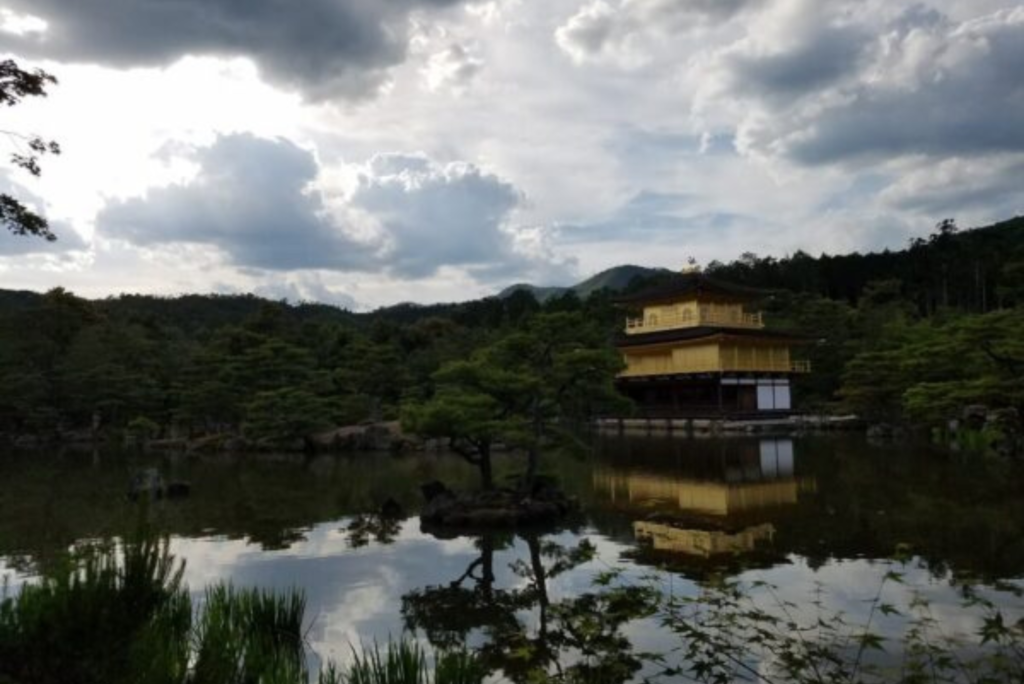



One Comment
Pingback: